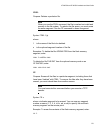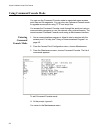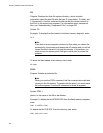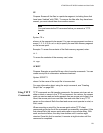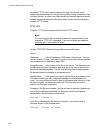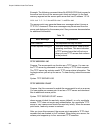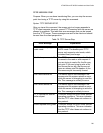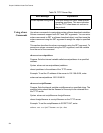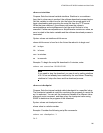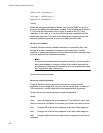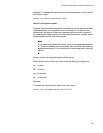
Chapter 9: Additional Access Point Features
280
In general, TFTP client sessions should fail only if the server is not
responding either because it is busy serving other clients or because it has
not been started. In either case, the access point backoff algorithm should
prevent excessive network traffic when many access points are trying to
contact a TFTP server.
TFTP GET
Purpose: TFTP client requests a file from the TFTP server.
Note
You must use the FE command to erase the segment before you
execute a TFTP GET command. If you do not erase the segment,
you may get a “can’t write file” error.
Syntax: TFTP GET IPaddress foreignfilename localfilename
where:
IPaddress is the IP address or DNS name of the server. You can
use an asterisk (*) here if you want to use the value in the internal variable
serveripaddress (as defined on page 284).
foreignfilename is the name of the file on the server. The filename can
contain directory path information and must be in the format required by
the server operating system. The file must already have the appropriate
file header before the transfer to the access point.
localfilename is the name you wish to call the file on the access point.
The name must begin with a segment number or name followed by a
colon. You may or may not have to specify a filename after the colon: if the
file has a header, the filename is optional; if the file does not have a
header, the filename is required.
Example: If the file has a header, you do not have to include a filename as
part of the localfilename because the filename is set to the filename
embedded in the file header on the server:
TFTP GET * file.dat 1:
If the file is a transparent file (without a header), you must include a
filename as part of the localfilename:
TFTP GET * file.dat 1:file.dat




